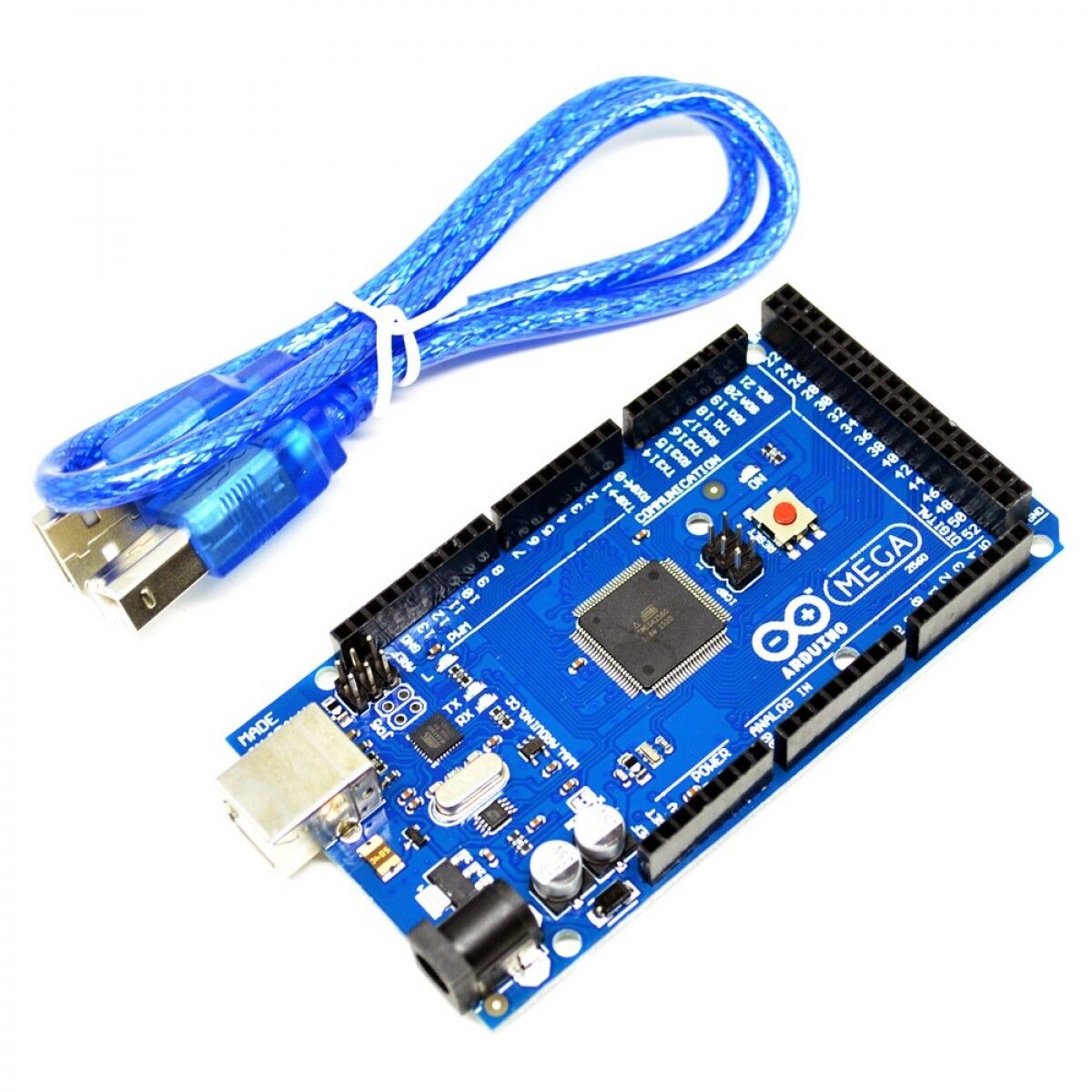Description
Arduino mega
The Arduino Mega 2560 is a microcontroller board based on the ATmega 2560.
It has 54 digital input/output pins (of which 15 can be used as PWM outputs), 16 analog inputs,
4 UARTs (hardware serial ports), a 16 MHz crystal oscillator, a USB connection, a power jack, an ICSP header, and a reset button.
It contains everything needed to support the microcontroller,
simply connect it to a computer with a USB cable or power it with an AC-to-DC adapter or battery to get started.
The Mega 2560 board is compatible with most shields designed for the Uno and the former boards Duemilanove or Diecimila.
Power
The Mega 2560 can be powered via a USB connection or with an external power supply.
The power source is selected automatically. External (non-USB) power can come either from an AC-to-DC adapter (wall-wart) or a battery.
The adapter can be connected by plugging a 2.1mm center-positive plug into the board’s power jack.
Leads from a battery can be inserted in the GND and Vin pin headers of the POWER connector. The board can operate on an external supply of 6 to 20 volts.
If supplied with less than 7V, however, the 5V pin may supply less than five volts and the board may become unstable. If using more than 12V,
the voltage regulator may overheat and damage the board. The recommended range is 7 to 12 volts.
The power pins are as follows:
Vin. The input voltage to the board when it’s using an external power source (as opposed to 5 volts from the USB connection or other regulated power source).
You can supply voltage through this pin, or, if supplying voltage via the power jack, access it through this pin.
5V. This pin outputs a regulated 5V from the regulator on the board.
The board can be supplied with power either from the DC power jack (7 – 12V), the USB connector (5V),
or the VIN pin of the board (7-12V). Supplying voltage via the 5V or 3.3V pins bypasses the regulator, and can damage your board. We don’t advise it.
3V3. A 3.3 volt supply is generated by the on-board regulator. Maximum current draw is 50 mA.
GND. Ground pins.
IOREF
This pin on the board provides the voltage reference with which the microcontroller operates.
A properly configured shield can read the IOREF pin voltage and select the appropriate power source
or enable voltage translators on the outputs for working with the 5V or 3.3V.
Memory The ATmega2560 has 256 KB of flash memory for storing code (of which 8 KB is used for the bootloader),
8 KB of SRAM and 4 KB of EEPROM (which can be read and written with the EEPROM library).
arduino pro mini
